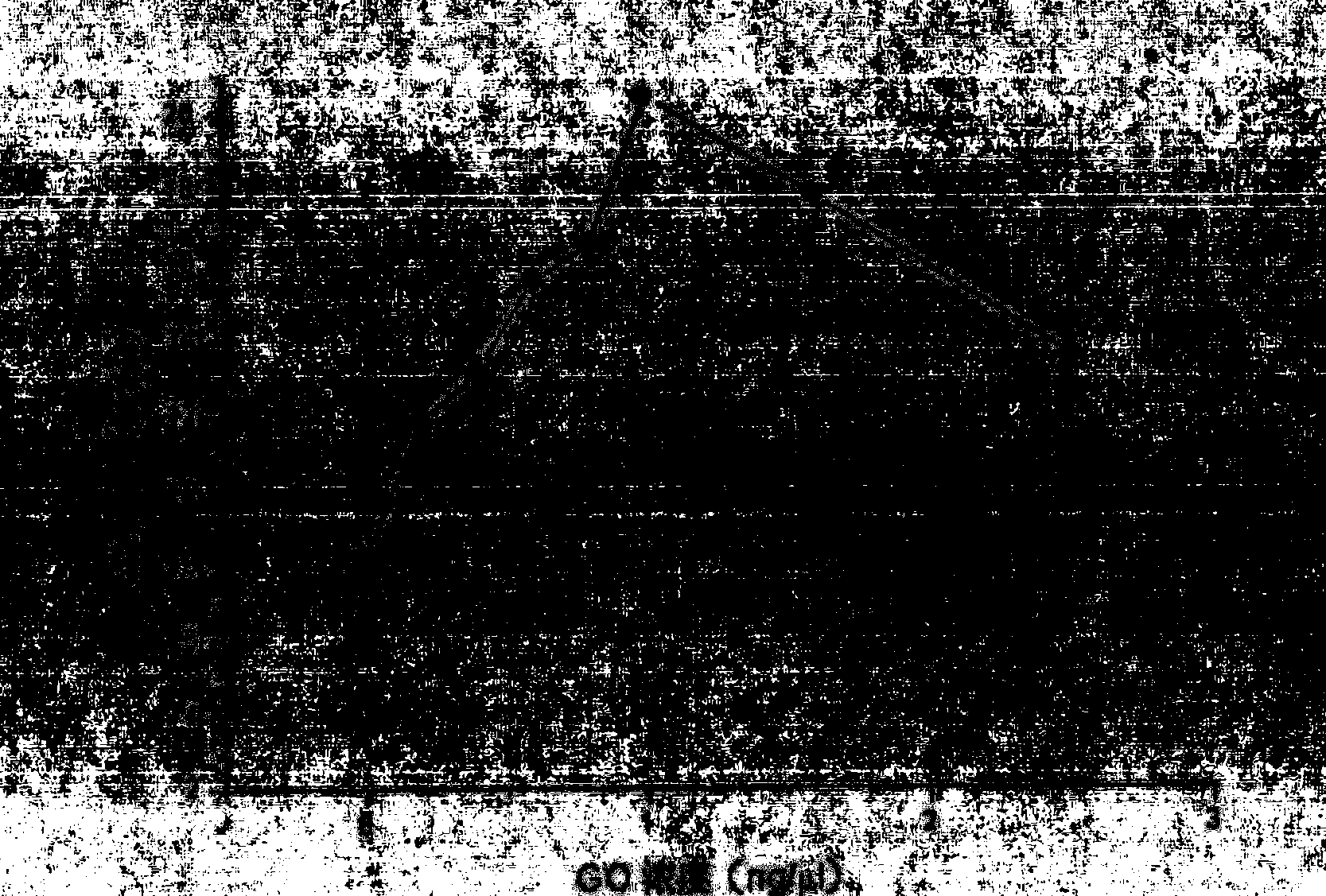Application of graphene oxide
A technology of graphene and stone oxide, which is applied in the application field of graphene oxide, can solve the problem of unsatisfactory comprehensive optimization effect of carbon nanomaterials, and achieve the effect of eliminating amplification primer dimer, low cost, and excellent comprehensive effect
- Summary
- Abstract
- Description
- Claims
- Application Information
AI Technical Summary
Problems solved by technology
Method used
Image
Examples
preparation example Construction
[0027] Reference Example 1 Preparation of Graphene Oxide A
[0028] The preparation method and structural information characterization of graphene oxide A are as described in the literature (Reduction of graphene oxide via L-ascorbic acid.Chem.Commun., 2010, 46, 1112-1114), specifically for first using KMnO 4 / H 2 SO 4 Oxidize graphite powder to obtain oxidized graphite, and then undergo ultrasonic treatment to obtain a sheet of graphene oxide exfoliated therefrom. GO was observed by atomic force microscopy (AFM) and transmission electron microscopy (TEM), and its height was 1.2 nm, consistent with the known height of monolayer GO.
[0029]The size and distribution statistics of graphene oxide A sheets are as follows: a large sheet is a single GO sheet whose upper surface area is greater than 1×10 5 nm 2 , the ratio of the sum of the area of large sheets of GO meeting this condition to the total upper surface area is 83.2%, and the number of large sheets meeting this con...
Embodiment 1
[0034] The influence of the graphene oxide (GO) of embodiment 1 different concentrations on the β-actin gene amplification of people
[0035] 1. Purpose of the experiment
[0036] Using the human genome as a template, amplify the 408bp β-actin gene (Enzymatic amplification of beta-globin genomic sequences and restriction site analysis for diagnosis of sickle cell anemia. Science, 1985, 230, 1350-1354.), compared with no GO , and the effect of adding different amounts of GO.
[0037] 2. Experimental methods and materials
[0038] Primer 1: 5′-GAAGAGCCAAGGACAGGTAC-3′
[0039] Primer 2: 5′-GGAAAATAGACCAATAGGCAG-3′
[0040] Composition of PCR solution system (25μl):
[0041] components
[0042] PCR steps and conditions: (1) 94°C preheating for 5 minutes, (2) 94°C denaturation for 30 seconds, (3) 55°C annealing for 40 seconds, (4) 72°C extension for 40 seconds, (5) 72°C extension for 5 minutes ; Steps (2)-(4) are repeated for 35 cycles.
[0043] 3. Experimental resu...
Embodiment 2
[0049] Example 2 PCR optimization effect of graphene oxide (GO) on different concentrations of human genome template
[0050] 1. Purpose of the experiment
[0051] Using the human genome as a template, the 408bp β-actin gene was amplified, and the PCR amplification effects before and after adding GO to different concentrations of the human genome template were compared.
[0052] 2. Experimental methods and materials
[0053] GO is GO of Reference Example 1 and Reference Example 3.
[0054] The experiment was divided into three groups, one group without GO, and the other two groups with 0.8ng / μl graphene oxide A and graphene oxide C added to the PCR solution respectively. In each group line, 5 groups of experiments were carried out, and the concentrations of the human genome template were 2, 1, 0.1, 0.01 and 0.001 ng respectively. All the other components in the PCR solution system are the same as in Example 1.
[0055] The PCR conditions are the same as in Example 1.
[0...
PUM
 Login to View More
Login to View More Abstract
Description
Claims
Application Information
 Login to View More
Login to View More - R&D Engineer
- R&D Manager
- IP Professional
- Industry Leading Data Capabilities
- Powerful AI technology
- Patent DNA Extraction
Browse by: Latest US Patents, China's latest patents, Technical Efficacy Thesaurus, Application Domain, Technology Topic, Popular Technical Reports.
© 2024 PatSnap. All rights reserved.Legal|Privacy policy|Modern Slavery Act Transparency Statement|Sitemap|About US| Contact US: help@patsnap.com










